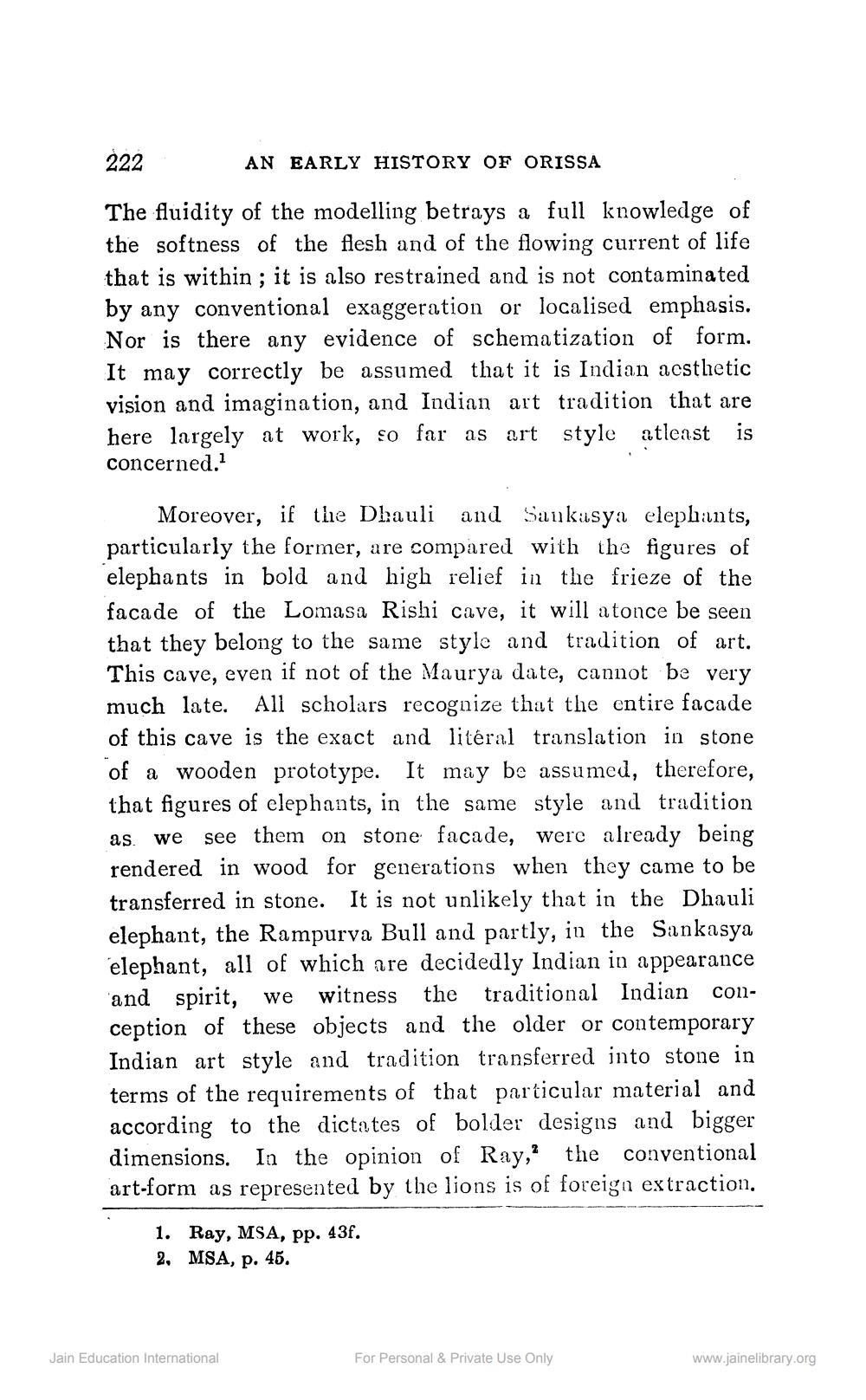________________
222
AN EARLY HISTORY OF ORISSA
The fluidity of the modelling betrays a full knowledge of the softness of the flesh and of the flowing current of life that is within ; it is also restrained and is not contaminated by any conventional exaggeration or localised emphasis. Nor is there any evidence of schematization of form. It may correctly be assumed that it is Indian acsthetic vision and imagination, and Indian art tradition that are here largely at work, so far as art style atleast is concerned.
Moreover, if the Dhauli and Sankusya elephants, particularly the former, are compared with the figures of elephants in bold and high relief in the frieze of the facade of the Lomasa Rishi cave, it will atonce be seen that they belong to the same style and tradition of art. This cave, even if not of the Maurya date, cannot be very much late. All scholars recognize that the entire facade of this cave is the exact and literal translation in stone of a wooden prototype. It may be assumed, therefore, that figures of elephants, in the same style and tradition as. we see them on stone facade, were already being rendered in wood for generations when they came to be transferred in stone. It is not unlikely that in the Dhauli elephant, the Rampurva Bull and partly, in the Sankasya elephant, all of which are decidedly Indian in appearance and spirit, we witness the traditional Indian conception of these objects and the older or contemporary Indian art style and tradition transferred into stone in terms of the requirements of that particular material and according to the dictates of bolder designs and bigger dimensions. In the opinion of Ray, the conventional art-form as represented by the lions is of foreign extraction,
1. Ray, MSA, pp. 43f. 2. MSA, p. 45.
Jain Education International
For Personal & Private Use Only
www.jainelibrary.org




